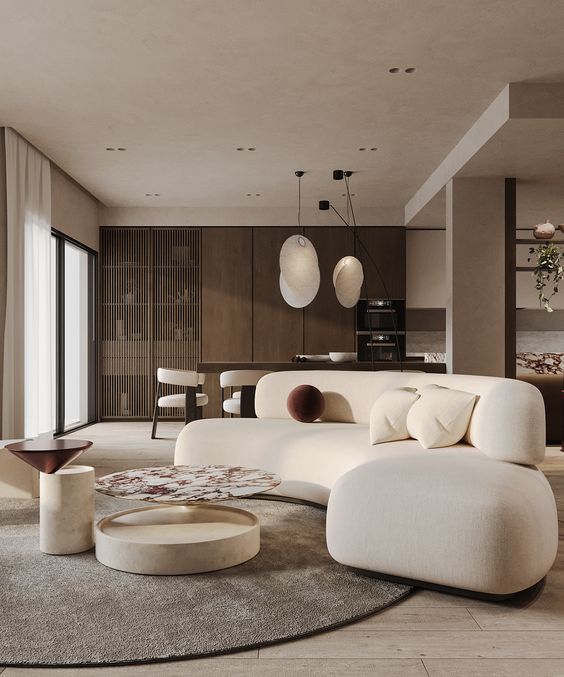Efficient Methods for Welcoming Minimalism in a Busy Way of living
Efficient Methods for Welcoming Minimalism in a Busy Way of living
Blog Article
Comprehending Minimalism: Strategies for Lowering Clutter and Enhancing Clarity in Everyday Living
Minimalism is significantly acknowledged as a viable approach to boosting clearness and emphasis in today's cluttered world. By systematically reviewing our possessions and prioritizing intentionality, we can develop spaces that not just show our values but also promote mental wellness.
Specifying Minimalism and Its Advantages
Defining minimalism includes recognizing it as a lifestyle choice that emphasizes simpleness and intentionality in both everyday routines and physical properties. At its core, minimalism motivates individuals to prioritize what truly matters, enabling a much more purposeful and focused presence. By removing the non-essential, minimalism welcomes individuals to engage deeply with their environments and experiences.
The advantages of adopting a minimalist strategy are diverse. To start with, it fosters psychological clearness, as lowering clutter in one's environment can bring about reduced disturbances and stress and anxiety. Individuals typically report enhanced focus and enhanced performance when bordered by less properties. Minimalism advertises monetary liberty; by focusing on demands over desires, people can make more informed investing in choices, leading to potential savings and decreased debt. In addition, a minimal lifestyle can generate emotional advantages, as it motivates people to grow gratefulness of what they have as opposed to yearning for much more.
Inevitably, minimalism is not simply about worldly reduction but entails an all natural change in perspective, cultivating a life characterized by gratification, balance, and function. Welcoming this way of life can result in profound adjustments in just how people perceive and interact with the globe around them.
Analyzing Your Existing Mess
Clutter typically materializes as an overwhelming build-up of items that no longer serve a purpose, developing an obstacle to accomplishing a minimalist way of living. Take note of specific classifications of products, such as clothes, publications, or kitchenware, as this will help you recognize the scope of the mess.

In addition, consider the regularity of usage for each thing. Eventually, understanding your existing mess is a critical step towards accepting minimalism and enhancing clarity in your everyday living.

Practical Decluttering Techniques
Having analyzed your present clutter, the following step is to carry out useful decluttering techniques that help with a more organized living area. Minimalism. One efficient technique is the "Four-Box" method, where you designate 4 boxes labeled: keep, donate, garbage, and relocate. This strategy motivates quick decision-making and makes sure items are categorized appropriately
One more approach is the "One in, One out" guideline, which stipulates that for each brand-new item acquired, an existing item has to be eliminated. This principle aids maintain equilibrium and stops accumulation over time. In addition, take into consideration the "30-Day Minimalism Game," where you eliminate one thing on the initial day, two on the 2nd, and so forth, cumulatively promoting a sense of success.
Limitation yourself to a particular number of cherished products, enabling you to appreciate their importance without frustrating your area. By employing these methods, you can develop a more efficient and calm living space, ultimately boosting clarity in your everyday life.
Creating Intentional Spaces
Developing intentional areas includes a thoughtful approach to just how we layout and arrange our settings, making certain each location offers a certain purpose and shows our worths. This method is vital in cultivating a feeling of clarity and function in our lives. By seriously examining the function of each area, we can get rid of distractions and boost our overall well-being.
To develop intentional rooms, start by determining the key activities that will occur in each area. For instance, an office should be designed to foster efficiency, incorporating components such as ample illumination, comfy furnishings, and very little distractions. On the other hand, a leisure area ought to advertise peace, including soothing shades and comfy seating.
Additionally, think about the emotional influence of your surroundings (Minimalism). important site Incorporating personal things that reverberate anchor with your values, such as artwork or plants, can boost the link to your room. On a regular basis examine these environments to guarantee they continue to serve their intended purpose as your needs progress
Ultimately, developing intentional areas has to do with making mindful selections that straighten with your way of life, advertising consistency and effectiveness in your living and working atmospheres.
Maintaining a Minimalist Mindset
Accepting a minimal mindset needs ongoing representation and intentionality in our ideas and actions. Set apart time to examine your commitments, ownerships, and even electronic content, guaranteeing they line up with your core principles.
This change in viewpoint encourages appreciation for simplicity, enhancing general health. Including mindfulness techniques, such as reflection or journaling, can even more reinforce a minimalist frame of mind by promoting clarity and reducing mental clutter.
In addition, establish borders to safeguard your time and energy. Discover to say no to non-essential responsibilities and diversions that do not add to your individual growth. Border on your own with like-minded people that sustain your minimal journey, as shared values can boost motivation and accountability.
Final Thought
In verdict, welcoming minimalism offers considerable benefits, consisting of reduced mess and improved clearness in every day life (Minimalism). By systematically evaluating ownerships and carrying out useful decluttering methods, people can develop deliberate spaces that promote mindfulness and appreciation. Keeping a minimalist attitude requires recurring analysis and commitment to simplicity, inevitably leading to a much more concentrated and fulfilling way of life. The concepts of minimalism serve as valuable tools for cultivating an atmosphere that supports individual growth and health.

Additionally, think about the "30-Day Minimalism Video Game," where you eliminate one product on the first day, 2 on click reference the second, and so forth, cumulatively promoting a feeling of accomplishment.
In conclusion, embracing minimalism provides considerable advantages, including lowered mess and enhanced clearness in day-to-day life.
Report this page